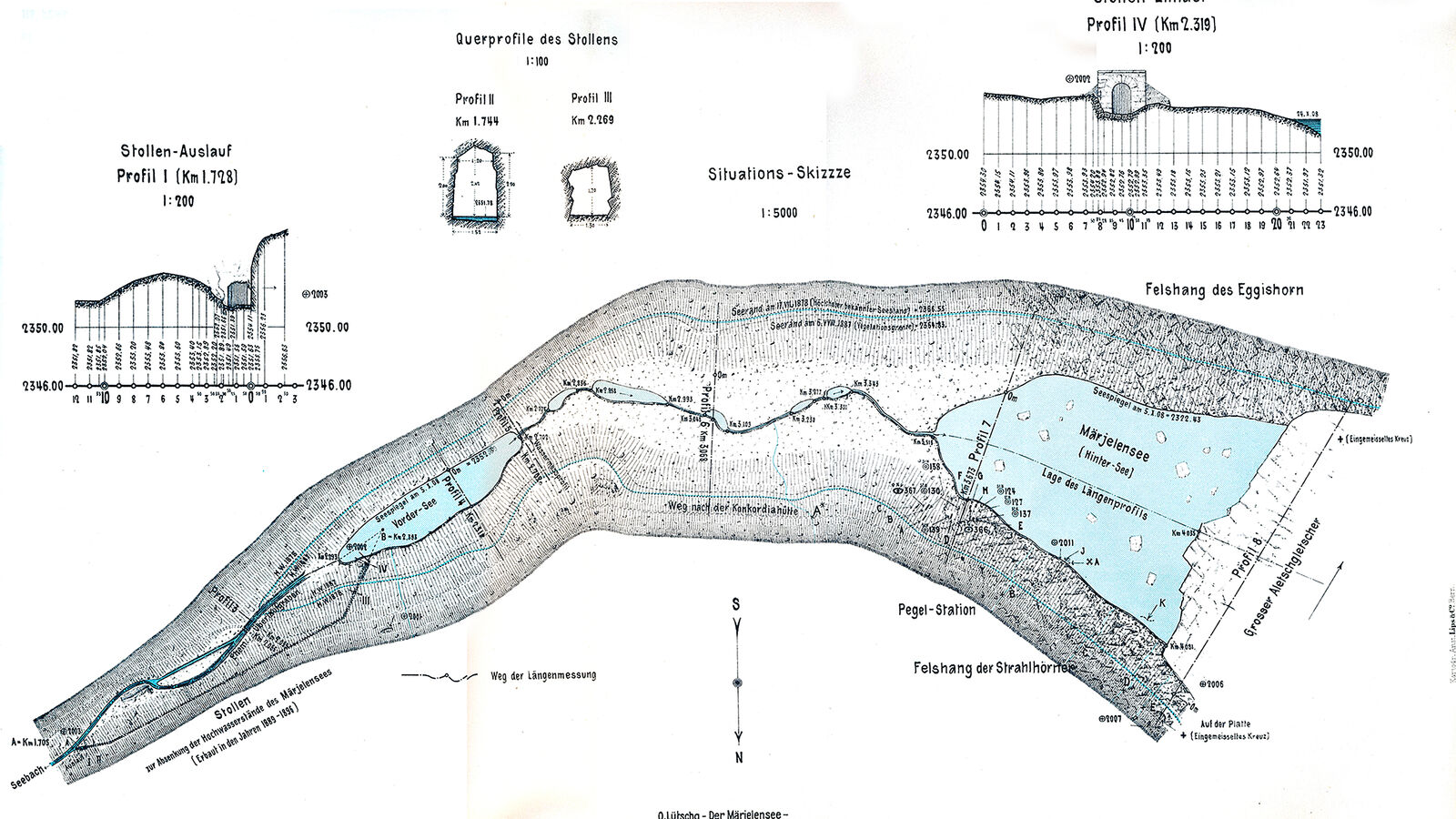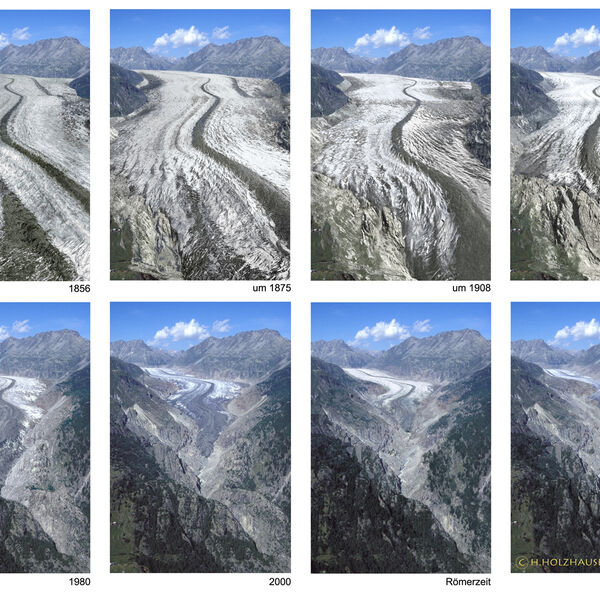Schweizer Alpen Jungfrau-Aletsch
Wieso der Märjelensee einst gefürchtet wurde
Früher, als der Grosse Aletschgletscher noch viel mächtiger war, stellte der Märjelensee, dieses spätere touristische Kleinod, eine ständige Bedrohung dar: Dieser typische Gletscherrandsee war für seine häufigen und unberechenbaren Ausbrüche berüchtigt. Die Wassermassen richteten vor allem in Naters zwischen 1813 und 1915 verheerende Schäden an.
Während Gletscherhochständen schwappte das Wasser zudem nicht selten ins benachbarte Fieschertal über – meist während der Schneeschmelze oder nach starken Regenfällen. Auch dort wurden von den Fluten erhebliche Schäden angerichtet. Aus diesem Grund hatte man schon 1828 unter der Leitung von Kantonsingenieur Ignaz Venetz einen kleinen Kanal gegraben, der die vom Strahlhorn in den Märjelensee fliessenden Wildbäche ins Fieschertal ableitete. Gegen einen grösseren Kanal wehrten sich die Fieschertaler vorerst, weil sie noch grössere Schäden befürchteten. Erst als man ihnen Schadenersatz zusicherte, willigten sie ein. Der grosse Kanal wurde 1829 fertiggestellt.
Zwischen 1889 und 1894 baute man zur Entschärfung des Sees einen Stollen. Doch nur einmal, 1896, floss Wasser durch das Bauwerk; seither hat der Seespiegel die Sohle des Tunneleingangs nie mehr erreicht.
Um 1988 wurde im Zusammenhang mit dem künstlich gestauten Vordersee der Tälligrat-Tunnel aus dem Fels gesprengt. Der Tunnel dient heute als Versorgungsstrasse für die «Gletscherstuba» und den Stausee. Für Touristen ist der beleuchtete Tunnel ebenfalls nützlich, können Sie doch so einiges an Zeit auf dem Weg von der Fiescheralp zur Märjela einsparen.
Heute bildet sich meist im Frühsommer zur Zeit der Schneeschmelze ein kleiner See, der jedoch regelmässig ausläuft. Ein kümmerlicher Rest vom einst gefürchteten und sagenumwobenen Gletscherrandsee.
Die verheerenden Ausbrüche wirkten sich auch auf die Sagenwelt der betroffenen Ortschaften aus. So gilt die Erzählung vom «Rollibock» als eine der Ältesten in Naters, ebenfalls sehr bekannt ist die Erzählung «Schoch, d’alt Schmidtja spinnt noch».




















